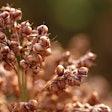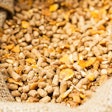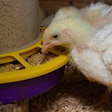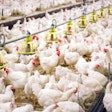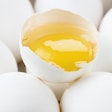
Corn prices are rising and, with them, prices for other ingredients
With corn prices skyrocketing throughout the world, I have received many calls regarding finding solutions.
Alternative ingredients are not a real solution and the reason is simple. When corn prices increase suddenly, prices for other energy-rich ingredients (including fats and oils) increase accordingly. Alternative ingredients can become a viable cost-saving option only with long-term planning.
Reducing energy levels, by using less corn, in also another non-viable solution. Soybean meal, the ingredient that will fill the gap in formulation is equally or even more expensive than corn. As for fiber-rich ingredients, these have always been expensive due to high demand from ruminants.
So, we cannot really replace or reduce the contribution of corn to the final formulation. What we can do is increase the caloric efficacy of corn. In other words, we can extract more energy per pound of corn. Here is how:
- Enzymes that enhance digestibility of starch (amylases) and/or non-digestible carbohydrates such as hemicelluloses (beta-glucans and arabinoxylans). Research is not clear whether existing enzymes offer any meaningful benefits with corn as most are designed to work with less digestible cereals such as barley and wheat. Most likely, combining these enzymes with corn will be beneficial in diets for young animals.
- Cooking offers increased starch digestibility but only slightly so. There are different methods of thermal processing, but the most advanced and controlled one is that of extrusion. Again, results appear to benefit young animals such as piglets and those that have high rates of feed intake and growth such as broilers.
- Grinding corn increases the available surface for all enzymes to act upon. This inevitably increases nutrient digestibility, including that of energy. It has been estimated that for every 100-micron reduction in particle size, feed efficiency drops by 1.3%. Too finely ground corn, however, is prone to decreased flowability that can cause problems is silos and animal feeders.
- Pelleting combines mild thermal processing and decreased feed volume. In general, animals consuming pellets consume more feed and extract more nutrients out of it. The effect, again, is more pronounced in younger animals. Feeding pellets in broilers is already a widespread practice, whereas in pigs it rarely goes beyond the first phase post-weaning.
Although all of the above options have the potential of increasing the caloric efficacy of corn, the increased cost associated with each method may eventually negate any benefits.






